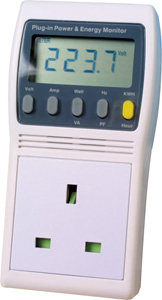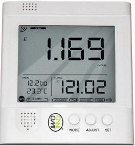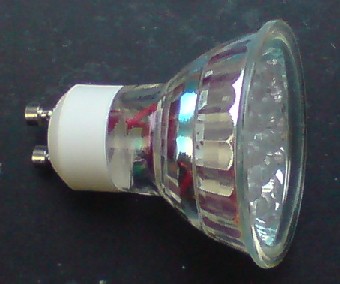Energy Audit
Energy Audit
Find out how to conduct an energy audit.
home > energy efficiency | carbon | generalAn energy audit helps you to calculate how much energy you use, where it is used, and where you can reduce energy usage and save money. You can carry out an energy audit at home or in the work place and very quickly you will see why you are spending so much on electicity.
Appliance Energy Consumption Monitors
Ideally you will first test each of your domestic appliances using a plug in digital Power or Energy Meter available here: plug in power meter for from £10.
Each appliance in turn is plugged into the power meter (an example of which is pictured above) so you can instantly see how many Watts of power are being used. Try this with your television on standby mode, and then with it on. You will never leave your television on standby when you see how much power is being wasted! It will also make you think twice about using your tumble drier frequently, boiling a full kettle of water rather than just what you need, and using your iron. If you have an old and/or inefficient fridge freezer you will be horrified. Buying a new efficient model could pay for itself in as little as one year!
Wireless Home Energy Monitor

To look at the energy consumption of the house as a whole (including the lighting circuits which cannot be measured with a plug in appliance monitor), a wireless electricity monitor such as the OWL CM160 + USB pictured above is very useful. It tracks and records total power consumption over hours, days, and weeks, so that your usage can be analysed in detail and any stubbon energy hogs identified.
Lighting
Lighting accounts for around 10-30% of most household electricity usage. For each light bulb multiply the number of watts printed on it by the number of hours that bulb is on each day - this tells you how many kWh (units) of electricity each bulb uses daily.Add up the values for all of your light bulbs and then multiply by 365 to see how many kWh of electicity you use lighting your house. Check your electricity bill to see how much you are paying for each kWh and you can then find out how much lighting your house is costing you. Immediately you will see how much you can save by replacing incandescent light bulbs with energy efficient CFL Bulbs, or the latest LED Spotlights (pictured below - replacing a 50W halogen spotlight) and 240V LED bulbs.

For example, a 100 Watt bulb on for 6 hours per day uses 600wh of electricity per day (divide by 1000 to get the figure in kwh = 0.6kwh). At an average of around 13p/kWh that will cost you £28 per year (0.6kWh x 365 days x £0.13)! Replace just one 100W bulb with an 18W CFL equivalent and you could save yourself around £23 per year.
Insulation - Reducing Heating Costs
Then you need to have a look at your home insulation. Try the home energy audit calculator (link at bottom of this article) to calculate how much of your expensive heating is escaping due to poor insulation. Money spent on loft insulation for example is a great investment. It will usually pay for itself in just two or three years, plus you are helping the environment too. For homes with un-insulated cavity walls, installing cavity wall insulation will lead to huge heating cost savings.More Information
Here are some excellent links to help you with your energy audit:Home Energy Audit Calculator from Resurgence. Find out where energy is lost as heat from your home and how you can combat the problem and save money.
Energy Savers from EERE and the US Department of Energy. Contains some great advice, hints and tips.
Comment on this Article
If you have any comments on this article, please email them to neil@reuk.co.uk.Related Articles
Click one of the links below for further articles on the following relevant topics:energy efficiency, carbon, general.